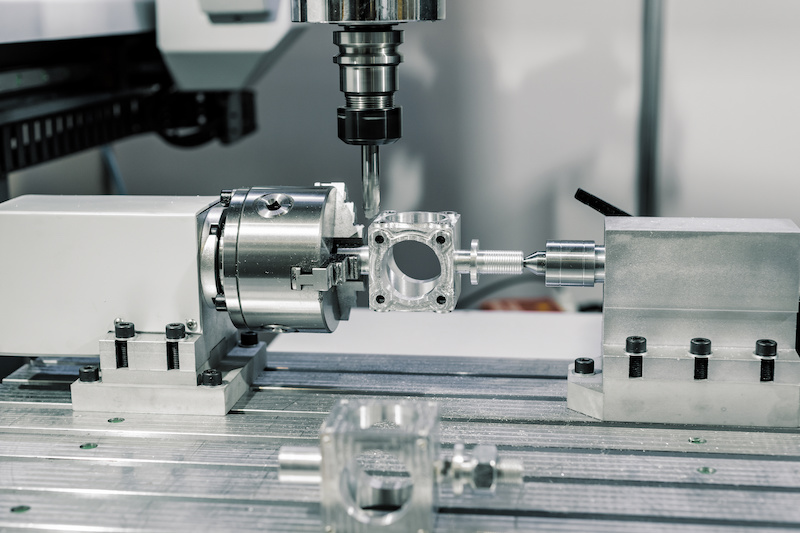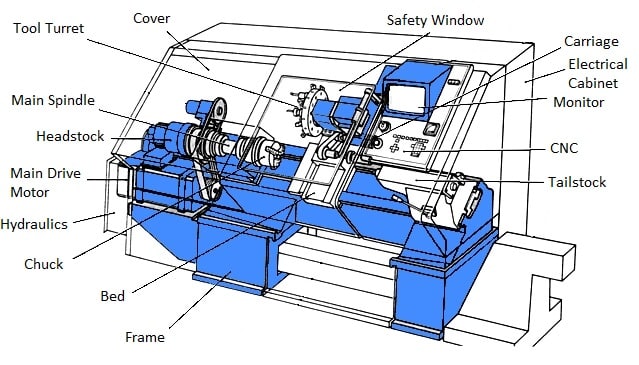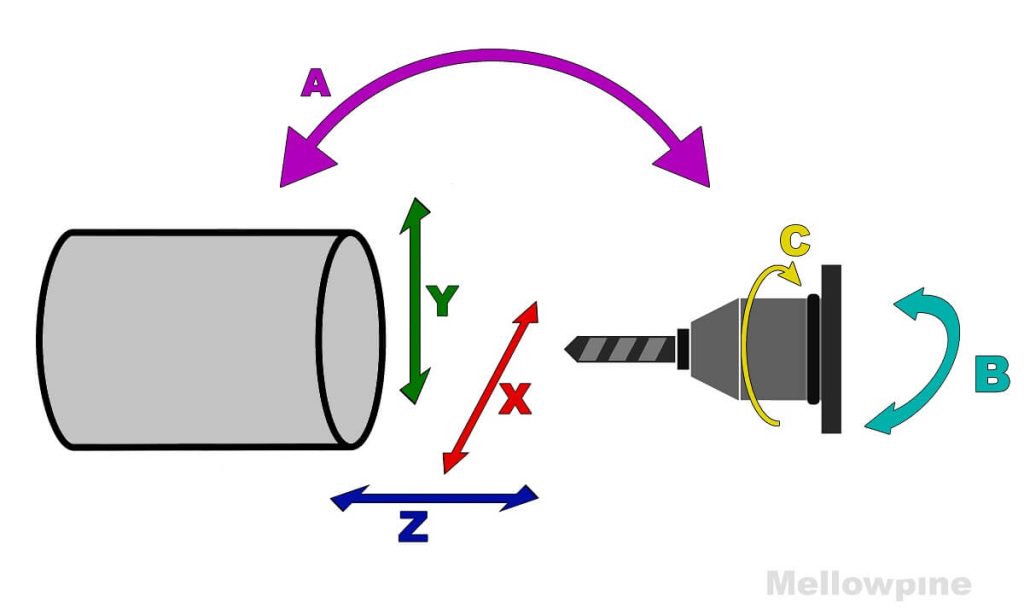Table of Contents
CNC lathe machines have revolutionized the manufacturing industry by allowing for precise and efficient cutting of various materials. But have you ever wondered how the cutting tools for these machines are made? The process of creating cutting tools for CNC lathe machines is fascinating and requires a high level of precision and expertise. In this article, we will explore the steps involved in making these essential tools and the materials used to create them.
How Are Cutting Tools for CNC Lathe Made?
Cutting tools are essential components of a CNC lathe machine. They are responsible for shaping the workpiece according to the programmed design. The tools are made with high precision to ensure that they can handle the rigors of the lathe machine. In this article, we will discuss how cutting tools for CNC lathe are made.
The Manufacturing Process of Cutting Tools for CNC Lathe
The manufacturing process of cutting tools for CNC lathe involves several steps. These steps are:
- Designing
- Material selection
- Heat treatment
- Machining
- Grinding
- Coating
Designing
The first step in making cutting tools for CNC lathe is designing. The design process involves creating a blueprint of the tool. The blueprint specifies the dimensions, shape, and materials of the tool.
Material selection
The second step is material selection. The material used to make cutting tools for CNC lathe should be hard, durable, and resistant to wear and tear. The most commonly used materials are high-speed steel, tungsten carbide, and ceramic.
Heat treatment
The third step is heat treatment. Heat treatment involves subjecting the tool to high temperatures to harden it. This process makes the tool more durable and resistant to wear and tear.
Machining
The fourth step is machining. Machining involves shaping the tool to its final form. This process requires high precision to ensure that the tool is accurate.
Grinding
The fifth step is grinding. Grinding involves sharpening the tool to ensure that it can cut through the workpiece with ease. This process requires high precision to ensure that the tool is sharp.
Coating
The final step is coating. Coating involves applying a layer of material to the tool to improve its performance. The most commonly used coatings are titanium nitride, titanium carbonitride, and diamond-like carbon.
The Benefits of Cutting Tools for CNC Lathe
Cutting tools for CNC lathe have several benefits. These benefits are:
- High precision
- High efficiency
- Repeatability
- Cost-effectiveness
High precision
Cutting tools for CNC lathe are made with high precision. This means that they can shape the workpiece with high accuracy and consistency. This ensures that the final product meets the required specifications.
High efficiency
Cutting tools for CNC lathe are designed to be highly efficient. They can cut through the workpiece with ease, reducing the time required to complete a task.
Repeatability
Cutting tools for CNC lathe can repeat a task with high accuracy. This ensures that the final product meets the required specifications every time.
Cost-effectiveness
Cutting tools for CNC lathe are cost-effective. They can produce high-quality products at a lower cost than traditional methods.
Cutting Tools for CNC Lathe Vs Traditional Cutting Tools
Cutting tools for CNC lathe have several advantages over traditional cutting tools. These advantages are:
- High precision
- High efficiency
- Repeatability
- Cost-effectiveness
- Flexibility
High precision
Cutting tools for CNC lathe are made with high precision. This means that they can shape the workpiece with high accuracy and consistency. Traditional cutting tools, on the other hand, may not be able to achieve the required precision.
High efficiency
Cutting tools for CNC lathe are designed to be highly efficient. They can cut through the workpiece with ease, reducing the time required to complete a task. Traditional cutting tools may require more time to complete a task.
Repeatability
Cutting tools for CNC lathe can repeat a task with high accuracy. This ensures that the final product meets the required specifications every time. Traditional cutting tools may not be able to achieve the required repeatability.
Cost-effectiveness
Cutting tools for CNC lathe are cost-effective. They can produce high-quality products at a lower cost than traditional methods. Traditional cutting tools may require more resources and time to produce the same quality of products.
Flexibility
Cutting tools for CNC lathe are flexible. They can produce a wide range of products with high accuracy and consistency. Traditional cutting tools may not be able to produce complex shapes with high accuracy.
Conclusion
Cutting tools for CNC lathe are essential components of the lathe machine. They are made with high precision to ensure that they can handle the rigors of the machine. The manufacturing process involves several steps, including designing, material selection, heat treatment, machining, grinding, and coating. Cutting tools for CNC lathe have several benefits, including high precision, high efficiency, repeatability, and cost-effectiveness. They also have several advantages over traditional cutting tools, including high precision, high efficiency, repeatability, cost-effectiveness, and flexibility.
Frequently Asked Questions
In this section, we will answer some common questions about how cutting tools for CNC lathe are made.
What materials are used to make cutting tools for CNC lathe?
Cutting tools for CNC lathe are usually made from materials that are hard and durable, such as tungsten carbide, high-speed steel, and ceramic. Tungsten carbide is the most commonly used material because of its hardness, wear resistance, and ability to withstand high temperatures. High-speed steel is also a popular choice because of its toughness and ability to resist heat. Ceramic cutting tools are used for high-speed machining and can withstand extreme temperatures.
The choice of material depends on the application and the type of metal being machined. For example, tungsten carbide is ideal for cutting hard metals like titanium and stainless steel, while high-speed steel is better suited for softer metals like aluminum and brass.
What is the process for making cutting tools for CNC lathe?
The process for making cutting tools for CNC lathe involves several steps. First, the material is selected and shaped into the desired size and shape using a variety of cutting tools, such as saws, grinders, and lathes. Next, the tool is heat-treated to increase its hardness and durability. This involves heating the tool to a specific temperature and then cooling it rapidly to create a hard surface layer.
After heat treatment, the tool is ground and polished to ensure its accuracy and smoothness. Finally, the tool is coated with a layer of material, such as titanium nitride or diamond-like carbon, to further increase its hardness and extend its lifespan.
What are some common types of cutting tools for CNC lathe?
There are many different types of cutting tools for CNC lathe, each designed for a specific application. Some of the most common types include turning tools, boring tools, drilling tools, and threading tools. Turning tools are used to remove material from the surface of a workpiece, while boring tools are used to create holes in the workpiece. Drilling tools are used to make larger holes, and threading tools are used to cut threads into the workpiece.
Each type of cutting tool comes in a variety of shapes and sizes, allowing them to be used for a wide range of applications. The choice of tool depends on the material being machined, the desired finish, and the type of machining operation being performed.
How long do cutting tools for CNC lathe last?
The lifespan of cutting tools for CNC lathe depends on several factors, such as the type of material being machined, the cutting speed and feed rate, and the quality of the tool itself. On average, a cutting tool can last anywhere from a few minutes to several hours of continuous use.
To extend the lifespan of cutting tools, it is important to use the correct tool for the job, maintain proper cutting speeds and feed rates, and regularly inspect and replace worn or damaged tools. Coating the tool with a layer of material, such as titanium nitride, can also help to increase its lifespan.
Can cutting tools for CNC lathe be sharpened?
Yes, cutting tools for CNC lathe can be sharpened to restore their cutting edge and extend their lifespan. However, sharpening must be done carefully to ensure that the tool is not damaged or misaligned.
Sharpening can be done using a variety of tools, such as a bench grinder or a diamond sharpening stone. The process involves removing a small amount of material from the cutting edge to create a sharp edge. It is important to follow the manufacturer’s instructions and use the correct angle when sharpening the tool.
In conclusion, the manufacturing process of cutting tools for CNC lathe is a complex and precise procedure. It involves a series of steps that require expertise, dedication, and attention to detail. From selecting the right materials to designing the tool geometry, every aspect of the process is critical to the tool’s performance and longevity.
Although the process may seem daunting, it is essential to ensure that the tools are of the highest quality and meet the demands of modern machining. With the advancements in technology and materials, cutting tools for CNC lathe have become more efficient, durable, and precise than ever before.
In the end, the cutting tools for CNC lathe play a crucial role in the manufacturing industry, and their quality can significantly impact the final product’s outcome. As such, it is essential to have a thorough understanding of the manufacturing process and the factors that influence the tool’s performance. By doing so, we can continue to push the boundaries of modern machining and engineering.
Request a quote today!
[contact-form-7 id="1578" title="Contact form"]
Please compress the file into a ZIP or RAR file before uploading. Alternatively, send through your RFQ by email.
enquires@unitymanufacture.com





